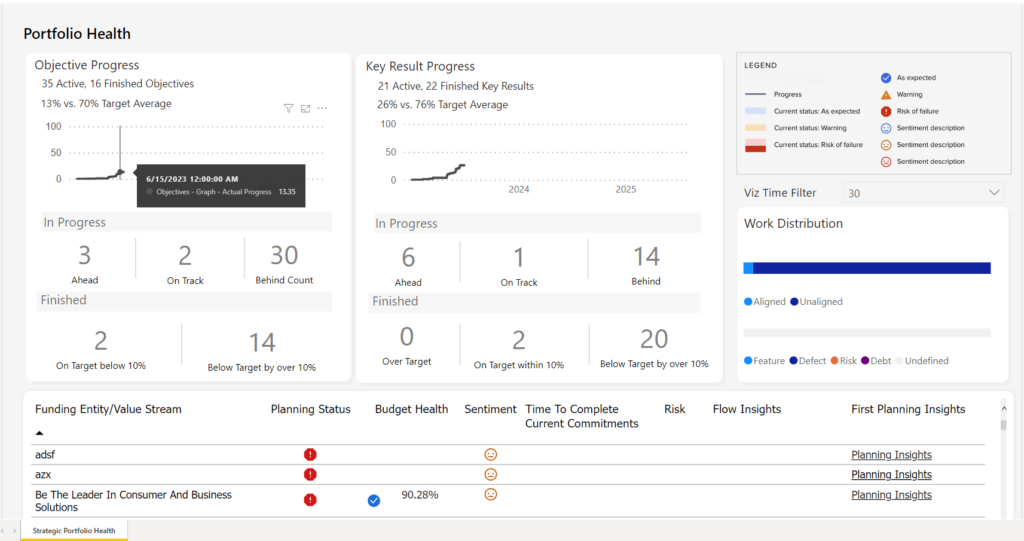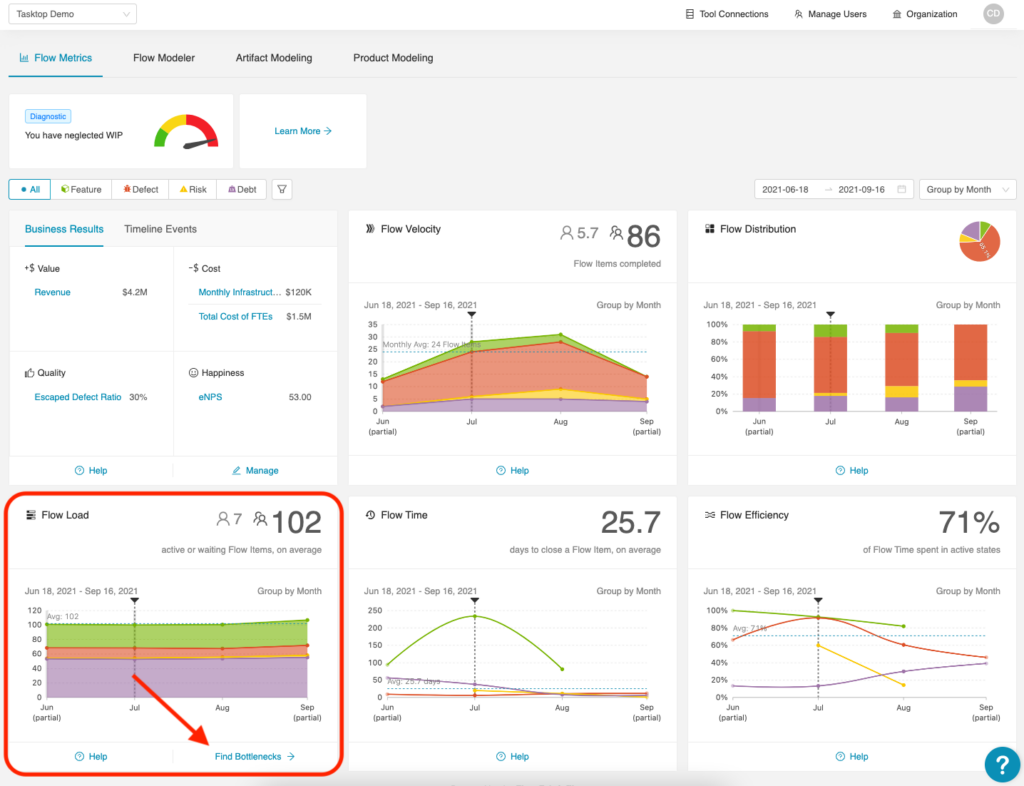
In today’s fast-paced and dynamic world of technology, the adoption of Agile methodologies has undoubtedly transformed the landscape of how technology teams function. These Agile principles have introduced a new level of adaptability, collaboration, and responsiveness, allowing organizations to stay agile and competitive in the ever-evolving market.
However, despite the significant advancements brought about by Agile, there’s no denying that certain challenges continue to be at the forefront of ensuring optimal efficiency within tech teams, particularly in the financial services industry. In particular, two critical areas that demand attention and solutions are the effective management of work in progress (WIP) and the speedy resolution of bottlenecks.
In this blog post, we’ll uncover why dedicating resources to tackle WIP and bottleneck resolution can lead to long-term time and resource savings. We’ll explore proven strategies for efficient WIP and bottleneck management, along with the best solutions available to streamline these processes.
The Detrimental Impact of WIP and Bottlenecks in Agile
WIP and bottlenecks wield tremendous influence over the productivity of agile product management, significantly impacting team performance and outcomes. An excessive amount of WIP can overwhelm teams, causing delays and inefficiencies. On the other hand, bottlenecks act as roadblocks in the process, resulting in slowdowns and potential work stoppages.
Efficiently handling WIP and promptly addressing bottlenecks are not mere options, but imperatives, for agile teams. They are the keystone to maintaining a seamless and productive workflow.
Striking this balance is paramount for process optimization, ensuring consistent work progress, and preserving productivity. Proficiency in managing these aspects forms the bedrock of agile success, empowering teams to navigate challenges and sustain peak performance levels.
Strategies for Managing WIP in Financial Services
Managing WIP in the financial services industry requires a unique approach due to the sector’s specific challenges and regulatory requirements. Effective WIP management requires a balance between regulatory compliance, risk mitigation, and operational efficiency. Below are some proven strategies used by Planview customers within the financial services industry:
- Regulatory Compliance
- To avoid potential legal and financial risks, prioritize regulatory compliance tasks within WIP to ensure compliance-related work is completed accurately and on time.
- Implement a strict change control process to manage regulatory changes effectively. This includes tracking, testing, and implementing changes within the required timeframes.
- Portfolio Prioritization
- Prioritize projects and initiatives based on their strategic importance, regulatory impact, and potential returns.
- Allocate WIP limits to different portfolios or business units based on size and complexity. This ensures that resources are allocated efficiently.
- Risk Assessment
- Integrate risk assessment into WIP management. Identify high-risk projects or tasks that may require additional scrutiny or resources.
- Track and manage risks associated with WIP items. Regularly review and update risk assessments.
- Data Security and Privacy
- Implement stringent data security and privacy measures when managing WIP. Protect sensitive customer information and adhere to data protection regulations.
- Regularly audit data handling processes to identify and address vulnerabilities or non-compliance issues.
In the tightly regulated environment of financial services, any lapses in these areas can have profound legal, financial, and reputational consequences. To deliver software quickly and securely, WIP management across regulatory compliance, portfolio prioritization, risk assessment, and data security is of the utmost importance.
Identifying and Addressing Bottlenecks
In the financial services industry, managing bottlenecks effectively will ensure the smooth flow of operations and maintain the highest level of service. Strategies for managing the unique bottleneck challenges faced by this industry include:
- Resource Allocation
- Allocate resources strategically to areas with the highest potential for bottlenecks.
- Prioritize projects and services based on their impact on revenue, compliance, or customer experience.
- Capacity Planning
- Continuously monitor and analyze the capacity of critical processes to identify potential bottlenecks before they occur. This proactive approach allows for timely adjustments and prevents disruptions.
- Automation
- Implement automation wherever possible to streamline routine tasks and reduce manual effort, which can lead to bottlenecks. This includes automating data entry and document processing.
- Data Analytics
- Leverage data analytics to predict and mitigate bottlenecks.
- By analyzing historical data and identifying patterns, you can take preemptive actions to prevent bottlenecks from occurring.
The Best Solutions for Managing WIP and Bottlenecks
As companies continuously seek ways to enhance productivity, meet customer demands, and streamline their workflows, selecting the right solutions to manage WIP and identify and resolve bottlenecks becomes paramount. These solutions provide valuable insights, aid in optimizing processes, and facilitate informed decision-making, ultimately leading to improved operational efficiency.
Below are two solutions that financial service customers of Planview utilize to address their unique needs and challenges.
Planview® Digital Product Insights Connected Dashboard
The Digital Product Insights Connected Dashboard is a valuable solution for managing WIP and identifying bottlenecks in software delivery. The solution provides visibility into the progress of an organization’s shift from project to product, offering insights into the health of product value streams and measuring business value flow. It also generates Flow Metrics, identifies potential risks delaying time to value, and offers recommendations on how to improve based on an analysis of flow data. Additionally, the solution helps teams manage capacity and identify opportunities for continuous improvement, which are essential aspects of managing work in progress and bottlenecks in software delivery.

Planview® Viz
Planview® Viz is a beneficial solution for managing work in progress and identifying bottlenecks in software delivery. It provides value stream management (VSM) analytics in the form of Flow Metrics, offering visibility into fragmented software delivery processes and toolchains, allowing for better and faster decision-making.

The Bottleneck Finder feature in Planview Viz uses built-in expertise to analyze data and pinpoint bottlenecks in the process, such as resource scarcity, lack of automation, process timing, and dependencies, enabling users to see where work is slowing down and piling up.
Additionally, Planview Viz facilitates team collaboration, project planning, and execution, visualizing work progress and helping to eliminate bottlenecks and improve team-defined processes.
A Tailored Approach for Every Organization
Effective management of WIP and bottlenecks is essential for financial service providers seeking to enhance their operational efficiency and meet regulatory compliance requirements. By harnessing the power of cutting-edge solutions designed specifically for this purpose, organizations can gain valuable insights into their processes, optimize workflows, and minimize risks. These solutions not only provide real-time visibility into ongoing projects and potential blockages but also assist in making data-driven decisions that lead to better resource allocation and smoother operations.
Implementing strategies to reduce WIP and bottlenecks requires a tailored approach to every organization’s unique needs.
To learn more about how Planview’s solutions can be adapted to address your challenges, read the Flow Metrics Business Leader’s Guide or request a demo of our Value Stream Management solution to see these transformative practices in action.




